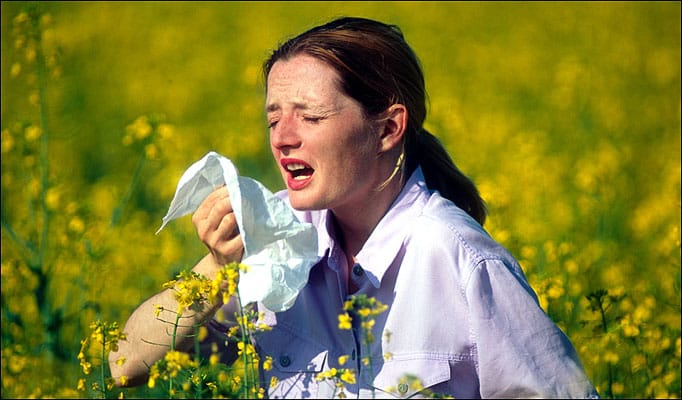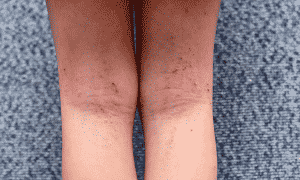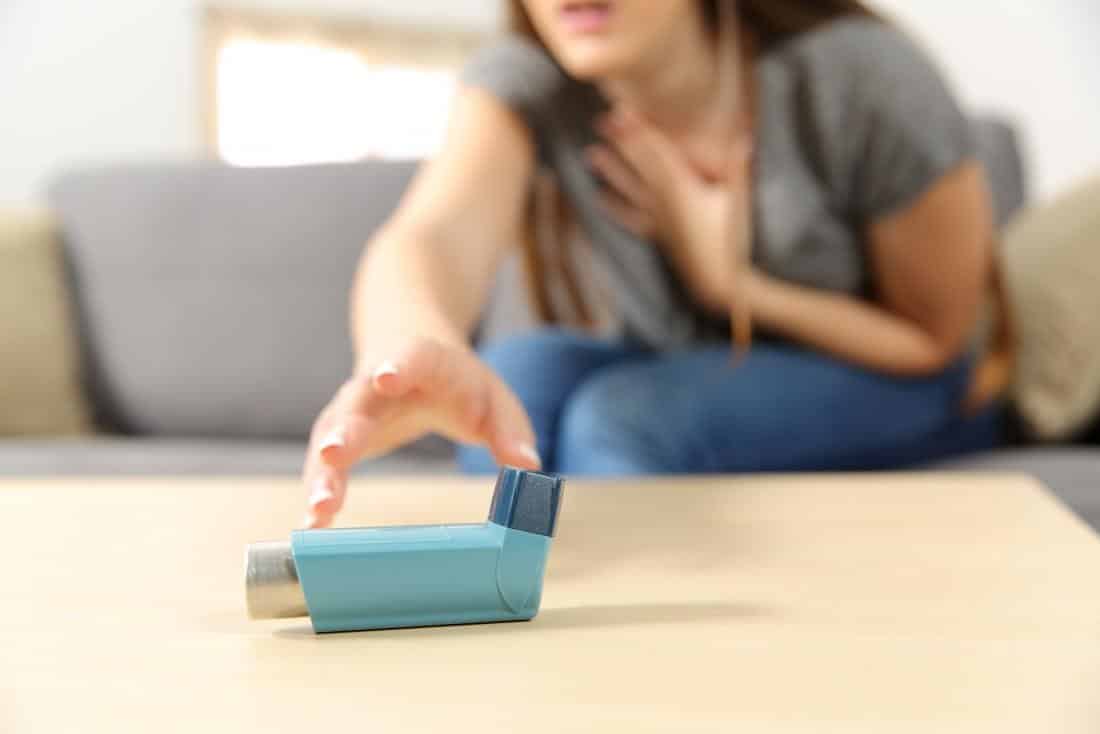In this blog post, read about the different types of allergies, their causes, their symptoms and their remedies.
Even though allergies are not so common, they are increasing day by day. Learning about the different types of allergies and their symptoms can help you identify the allergy if you or your friend is suffering from it.
What causes an allergy?
An Allergy is caused when the immune system incorrectly identifies a harmless substance in the environment as a dangerous substance. This creates antigens. When your body comes in contact with these substances again, these antigens make the immune system release chemicals into your blood. The symptoms your body shows to these allergies are actually the reactions of your body to these chemicals. Depending on the chemical released, different symptoms can occur.
Some of the symptoms of an allergy include sneezing, runny nose, red eyes, swelling, shortness of breath, vomiting and diarrhea. About 20% of the people in developed countries have allergies. The following are some of the most common allergies that affect people.
Inflammation of the nose
Hay fever (Allergic rhinitis)
Among the different types of allergies, this is one of the most common allergies in the western world. Every year 10% to 30% of the people are affected. The most commonly affected age group is 20 to 40.

Cause
The allergy was initially wrongly identified to be caused by hay. That’s how it got the name Hay fever. However, it is actually caused by the immune system overreacting to harmless substances in the air. These harmless substances may be pollen, pet hair, mold or dust.
Symptoms
Symptoms are similar to common cold (runny nose, watery eyes, sneezing and swelling around the eyes). But they can last for 2 weeks or more. Genetics and environmental factors are the reason behind hay fever.
Treatment
Antihistamines can be used to treat hay fever. However, it can have some side effects. Allergen immunotherapy over a period of 3 years or more has been found to be effective. Allergen immunotherapy exposes the patient to gradually increasing amounts of the allergens (material causing the allergy).
Inflammation of the skin
Atopic Dermatitis (Eczema)
Atopic Dermatitis is another common allergy among the differnt types of allergies in the world. It affects almost 20% of the people in the world at some point in their lives. This is more common in children.

Cause
Our skin, when healthy, protects us from irritants, allergens and bacteria. However, the skin becomes incapable of providing this protection. This may be due to genetic and environmental factors (sometimes due to food allergies). This is the cause for Eczema.
Symptoms
Dry and itchy (gets severe at night) skin with red or brownish gray patches often on the hands and legs. The skin can get thick and crack and sometimes be covered with bumps which leak fluid when crushed.
Related allergies
People who get Atopic Dermatitis are more prone to Asthma and Hay fever.
Treatment
There is no cure for Eczema. However, the following measures can help keep it under control.
Taking warm, short showers instead of long, hot showers; applying moisturizers twice a day; using gentle soaps and soft towels; and identifying the triggers (outside triggers – pollen, dust, etc; inside triggers – stress, obesity, etc; and food triggers – milk, eggs, etc) that worsen your condition and staying away from these triggers can help control Eczema. If you are interested, read about the different types of Eczema.
Inflammation of the airways of the lungs
Allergic Asthma
Allergic asthma is the most common type of asthma. 60% of the people who already have asthma are prone to allergic asthma.

Cause
The main cause of allergic asthma are allergens like pollen, pet dander, mold, cockroaches, and dust mites. Common triggers include tobacco, strong scent, pollution, cold air and fumes.
Symptoms
Symptoms of allergic asthma are wheezing, coughing, chest tightness leading to difficulty in breathing and shortness of breath.
Related allergies
Do you or someone else in your family have allergic asthma? Then you are more prone to hay fever and eczema as well.
Treatment
Allergic asthma cannot be cured.
However, home remedies like cleaning often using HEPA vacuum cleaners and using allergen proof bed-coverings can help reduce the contact with allergens. Using inhalers and taking certain steroids can help clear up the airways of the lungs.
Quick and Dangerous
Anaphylaxis
In some people, allergens can cause some of the above-mentioned reactions. However, for other people, the same allergens can cause life-threatening allergic reactions. The symptoms can occur rapidly and can cause death. Such a condition is called Anaphylaxis which often causes shock.
Have you or anyone in your family has already suffered from Anaphylaxis? Then you are more prone to this allergy.
Cause
Anaphylaxis can be caused by a variety of allergens. This includes food items, insect bites, other medications, latex and some exercises.
Symptoms
The early symptoms are also varied, including wheezing, chest pain, hoarse voice, nasal congestion, low pulse, swelling of skin, itching, rashes, vomiting, diarrhea, anxiety and head ache. However, when any of the symptoms including breathing difficulty, low blood pressure or lack of consciousness occur, it means this allergy has become life-threatening.
Treatment
Since Anaphylaxis is extremely dangerous, it is better to see a doctor immediately. Sometimes, the symptoms can disappear and return after a few hours. So, do not takeit lightly.
Immunotherapy (also used for treating cancer) is the process of artificially suppressing or activating the immune system. Immunotherapy is used to treat Anaphylaxis. Finding the allergen that caused the allergy and avoiding exposure to this allergen is another effective way to combat Anaphylaxis. Injecting Epinephrine (also used for treating cardiac arrests) is the most common emergency treatment for people suffering from Anaphylaxis. If there isn’t sufficient response, the injection is repeated after 5-15 minutes. People suffering from Anaphylaxis also wear jewelry indicating their condition and the allergen they are allergic to, so that people can help them if they become unconscious.
Food allergies
Food allergies are caused by various harmless food items. The various food items that cause allergies and their symptoms will be discussed in a later blog post.
Fun facts about the different types of allergies
- Just like humans can be allergic to pet dander, pets (and other humans) can be allergic to human dander as well.
- Our immune systems were designed to fight parasites. When we live in a clean environment breathing clean air, drinking clean water and eating clean food, our body starts identifying harmless food items as enemies. That’s why almost half of Americans are allergic to something.
- Since food allergies are caused by proteins found in food, a team in Trinity college in Dublin tried to eliminate food allergies in mice by injecting them with parasites. Their experiment was successful; the immune system started ignoring the proteins and started fighting the parasites instead.
- Inspired by the above experiment, Jasper Lawrence, who used to suffer from Asthma and other allergies, went to Africa and walked barefoot so as to infect himself with hookworms. As he had hoped, his asthma and other allergies weredefeated. He even started a business and was selling 35 hookworms for $3000.
- There are women who are allergic to male ejaculate and therefore allergic to sex.
- There are women who are allergic to their own sex hormones.
- Some people are allergic to water. This could make people unable to take bath.
- Organ donation also donates the allergies of the donor to the receiver.
We hope that this blog post helped you understand why some of the different types of allergies are caused, how to differentiate them, and how to treat them.
If this blog post helped you, kindly share it with your friends and family.
Helpful resource
This website helps you find and tackle your health problem based on the symptoms you have.
If you liked this blog post, you may also like the following blog posts:
Leave a Reply